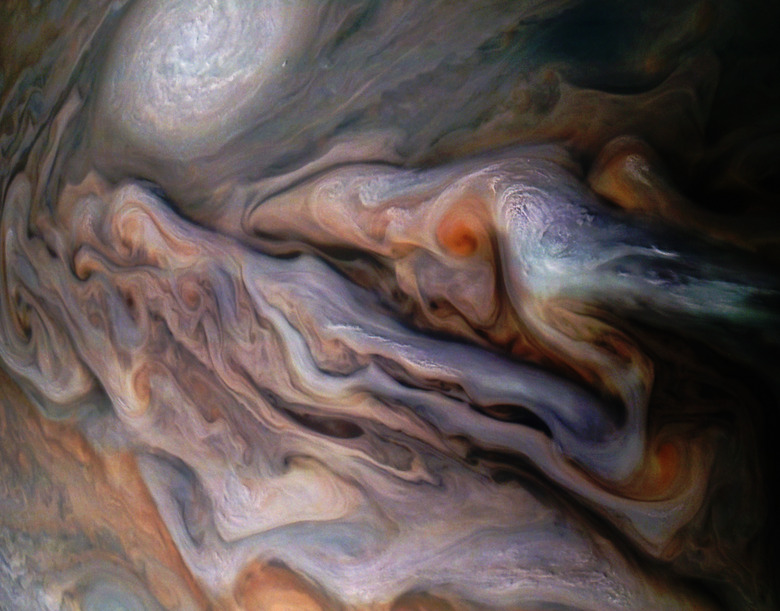Jupiter's Storms Are Filled With 'Superbolts' Of Lightning Unlike Anything On Earth
- NASA's Juno orbiter has observed lightning rolling across the tops of the gas giant Jupiter's cloud tops.
- Massive bolts of lightning have previously been detected deep within the planet, but this is the first time lightning has been observed at such a high altitude.
- The researchers believe that ammonia in the upper atmosphere is acting as an antifreeze to prevent water from turning into ice crystals, facilitating the electric charge.
Here on Earth, we're used to large storms producing a whole bunch of lightning. You'll hear the distant rumbling before a storm arrives and once it's upon you, you're often treated to a bit of a light show outside. Jupiter is absolutely covered in raging storms, so it makes sense that the planet would experience its own fair share of lightning as well.
In the past, astronomers have observed massive jolts of energy deep beneath the planet's swirling cloud tops, but spotting lightning in the upper reaches of the atmosphere has proven challenging. Now, observations made by NASA's Juno orbiter have revealed that Jupiter's cloud tops are frequently active with lightning as well, and the activity is like nothing we see on Earth.
Based on what Juno saw and sent back to Earth, we now know that electrical zaps crawl across the top of Jupiter's clouds on a regular basis. The discovery was made almost by accident, using Juno's navigation camera.
Typically, that camera is used to peer at the stars and pinpoint Juno's orientation and position in regards to the planet it's orbiting. Just for kicks, the Juno team decided to point the navigation camera at Jupiter's dark side as it zipped around the gas giant and spotted smaller lightning bolts popping up along the tops of the huge cloud systems.
"Juno's close flybys of the cloud tops allowed us to see something surprising – smaller, shallower flashes – originating at much higher altitudes in Jupiter's atmosphere than previously assumed possible," Heidi Becker of NASA's Jet Propulsion Laboratory said in a statement.
These smaller lightning bolts are much different than the larger "superbolts" that appear to originate from deep within the planet's massive storms. The researchers don't know exactly how they form, but as ScienceNews reports, there are some theories. It's possible, the researchers say, that ammonia at high altitudes merges with water and prevents it from freezing. When the water/ammonia droplets interact with water crystals, it could produce enough of a charge to create lightning.
"At these altitudes, the ammonia acts like an antifreeze, lowering the melting point of water ice and allowing the formation of a cloud with ammonia-water liquid," Becker explains. "In this new state, falling droplets of ammonia-water liquid can collide with the upgoing water-ice crystals and electrify the clouds. This was a big surprise, as ammonia-water clouds do not exist on Earth."
